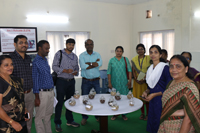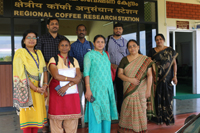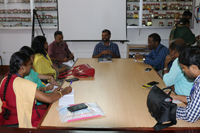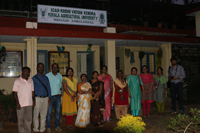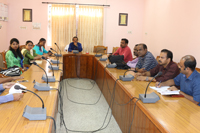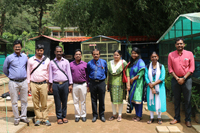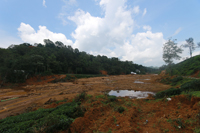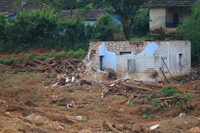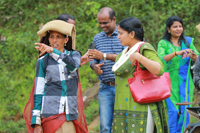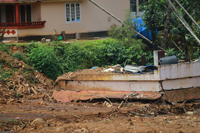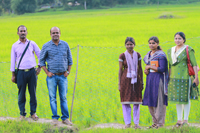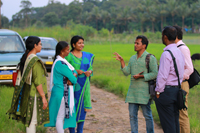
Visit to Wayanad district to study the impact of land slide that took place in 2nd week of August
Visit to Wayanad district to study the impact of land slide that took place in 2nd week of August
A multi-disciplinary team was constituted by the Dr. E.B. Chakurkar, Director (Acting) to visit Wayanad district and study the impact of floods and landslide that occurred in second week of August, 2019. The members were Dr. (Mrs.) S.Priya Devi, Principal Scientist (Horticulture- Fruit Science), Dr. Manohara,K.K, Senior Scientist (Plant breeding and Genetics), Dr. R.Maruthadurai , Scientist (Agrl Entolomology), Dr. Susitha, Scientist (Vet. Pathology) and Dr. Nibedita Nayak, Scientist (Poultry Science). The team visited the district on 3rd and 4th of October, 2019 and the trip, visits and discussions were facilitated by Dr. Solomon Rajkumar, Scientist (Livestock Products Technology). During the two days, we met officials from different Government organisations like, Coffee board Regional Research Station and Division of Soil and water Conservation, Wayanad Collectorate. Besides, Researchers and Extension workers from Agricultural College and Research Institute, Ambalavayal and and Krishi Vigyan Kendra, Wayanad were also met. Major NGO organisations in the district like MS Swaminathan Research Foundation and National Rural Livelihood Mission located were also visited. During the discussions held with the officials, the causes of the disaster, the losses that had occurred and the mitigation measures envisaged by each one of the body were deliberated upon. The major causes were reported to be sudden cloud burst (55 cm in 24 hours), anthropological reasons like constructions of buildings, cutting of forests for tea and coffee plantations in large stretches etc. There was loss of human life, cattle, properties, agricultural lands, feed and fodder stock etc reported. The steps to prevent further such disasters and the measures envisaged by the departments are reported below.
We also visited the Meppadi village, where the land slide had occurred. We could see large mass of slid soil that had filled up the deep valley. We also interacted with the public/ estate workers who had lost their homes and got rehabilitated into relief camps. We also visited the affected lowlands adjoining the river/ stream in Thirunelly. The main problem was inundation of paddy fields due to overflowing of the adjacent stream and the deposition of sand. We recorded that one portion of the field was reclaimed with replanting of fresh seedlings. The tribal farmers expressed their requirements for seeds of high yielding varieties of paddy and vegetable, parboiling unit, weeders, mini power tillers, and training on value addition.
Recommendations
- Proper action has to be taken to regulate the land development, construction and quarrying activities in landslide prone areas those are highly susceptible.
- Recreation of first and second order streams for diverting excess runoff from hill slopes.
- Stabilization of the slope by planting Bamboo as it acts as a water harvesting body and reduces the soil piping effect. Planting of deep rooted Ficus trees as the roots of ficus spreads and holds the soil intact which reduces the disintegration of soil.
- Graded bunding across the hill slope to obstruct water flowing with high velocity and diverting it with safe velocity through diversion channels and grassed waterways.
- Construction of retaining walls and planting vegetative barriers to reduce the erosion.
- Use of geotextile materials like geojute mats or Coir mats while planting for stabilization of hill slopes.
- Introduction of climate resilient crop varieties to cope up with biotic and abiotic stresses.
- Establishment of units for preparation of composite feed block to deal with fodder scarcity during calamities.
- Community animal sheds to rehabilitate livestock during calamities.
- Alternate livelihood sources such as Mushroom cultivation, small scale integrated units with poultry, fishery and vegetables can be promoted for small and marginal farmers.
